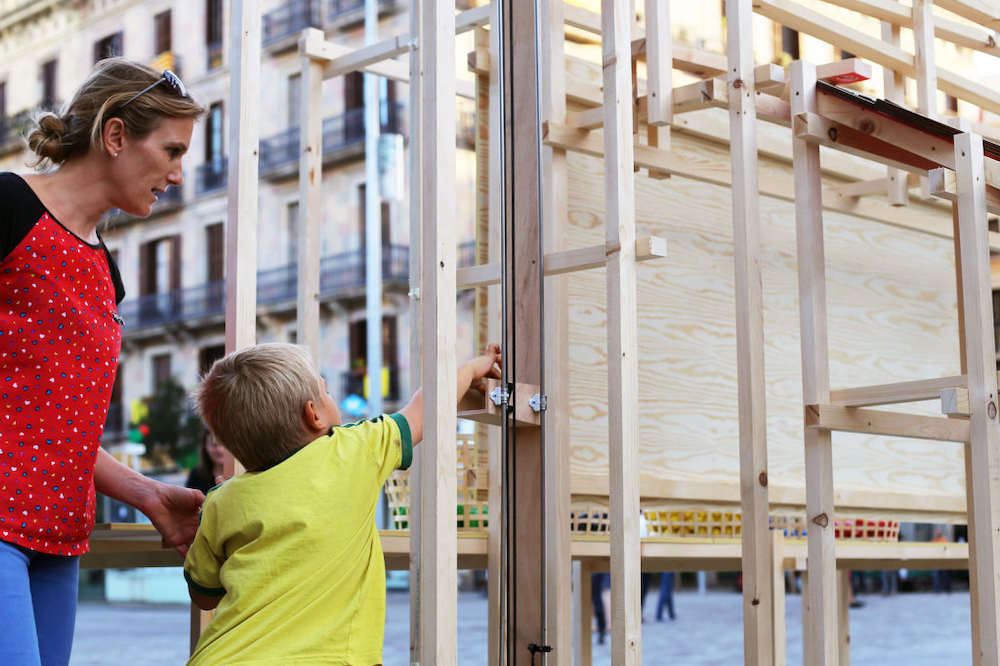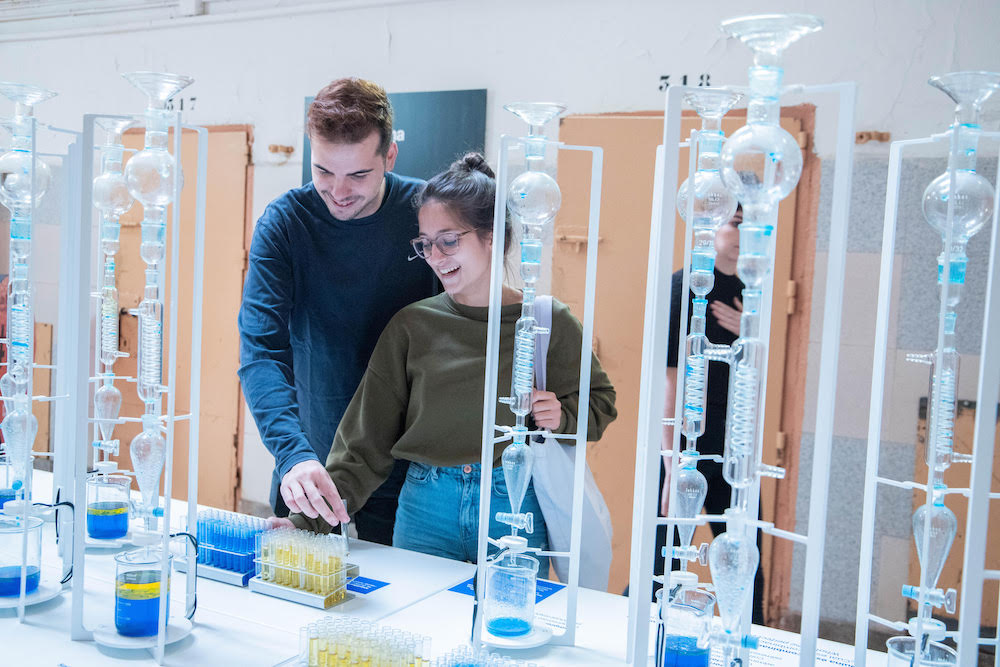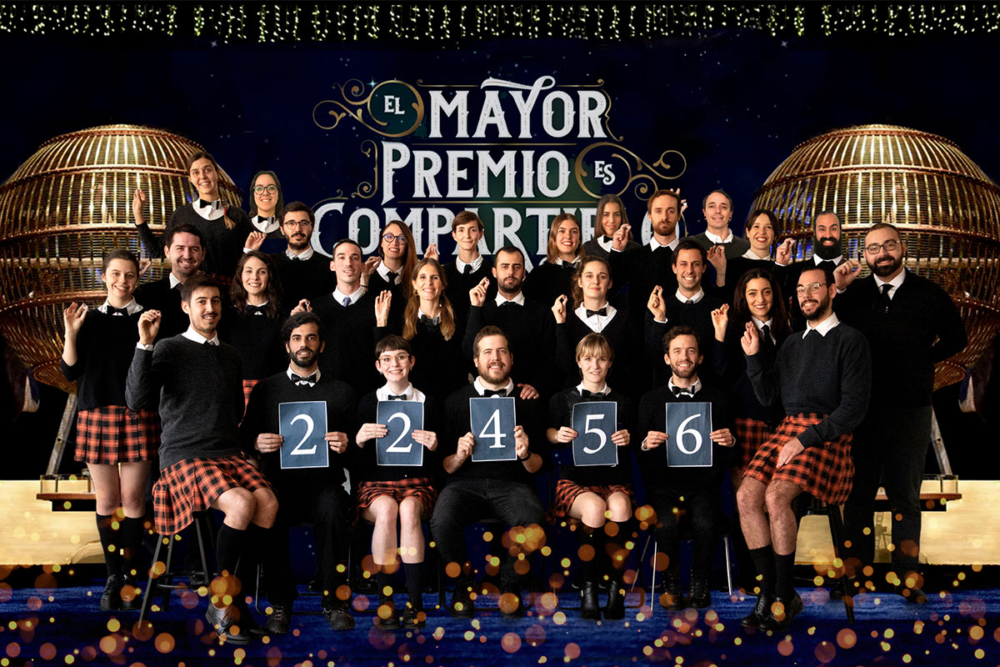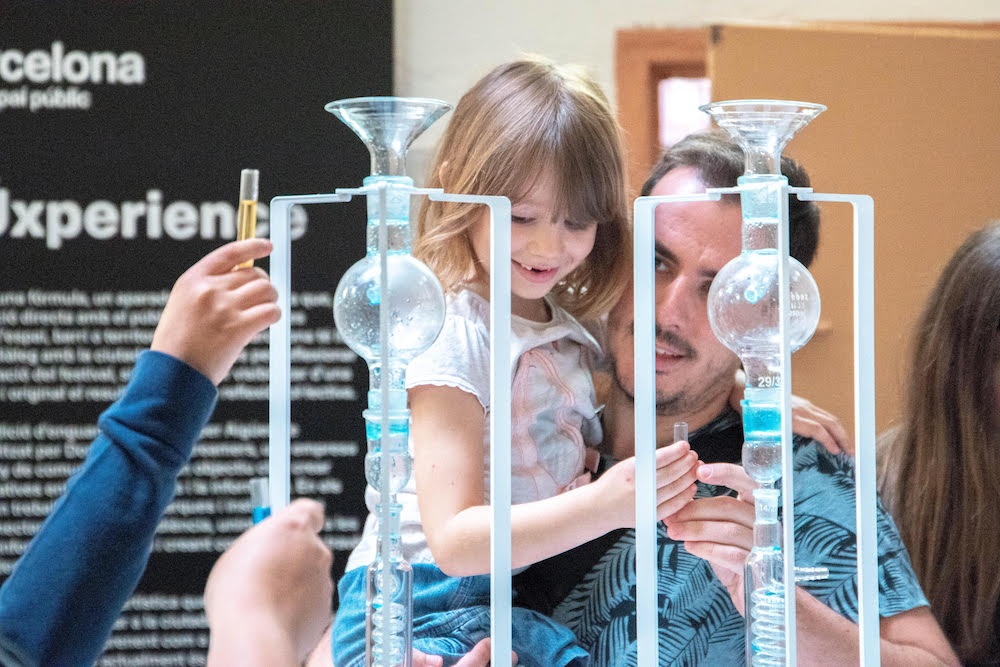“Children can also decide what good design is and why”
ho
Domestic Data Streamers think that good design is inclusive and they will not demonstrate to the family day «Good design is…» that they are preparing.

The Domestic Data Streamers (DDS) have made it clear, good design is inclusive, and so they will show with the activities they are preparing for the Family day of the “Good Design is…” Programme. We spoke with the Creative Director of the studio, Maria Fabuel, about Dieter Rams’ principles of good design, their work with data, their vision on technology and how their particular family, the “Data family” works with the intention of reaching all audiences.
If you could add a principle to the 10 principles of good design by Dieter Rams, what principle would it be?
Nowadays, good design should strive for radical inclusion at all levels: of roles, races, genders and social status. In addition, it should also try to fight against “Made-in-China” or Vietnam or Taiwan, and other consequences of globalization.
Would you remove any?
Mmm, not really, but principles 4 and 5 (Good design is understandable and unobtrusive) and even 10 (as little design as possible) talk about the same thing, Dieter’s main concern: Simplicity. This idea of not over-designing.
Your first large installation at the Disseny Hub contained 800 balloons, which is a good claim for children. What are you preparing for the Family day of “Good Design is…”?
We are still working on it, but it looks like we will need about 6 km of thread for the installation.
The idea is to prepare a day in which visitors (children and adults) become true design critics. It will be an analogue and participatory visualization where each visitor will be able to evaluate different objects of our day to day and decide if they fulfil the premises of “good design”.

You have done experiments and installations for all kinds of audiences, children, teenagers, adults … Which is the group you are more comfortable working with?
The truth is, we really cannot choose one. We love to face the challenges of explaining information to people of different ages, cultures and origins. The challenge of adapting our approach and breaking down our own prejudices to establish a fruitful dialogue and create action when designing experiences for diverse audiences is one of the most enriching parts for DDS. So our favourite group is basically everyone.
In your projects, you work mainly to humanize data, but for this you often use technology. How do you think technology could bring families closer than isolating them?
For us, technology is another tool, just as art or design is. It is a way to get closer to people and to create more relevant connections with the data or information that we want to transmit.
In the case of families, it is clear that having 15 screens at home instead of one is changing the way we relate to each other, but in the same way, it is helping us to connect in a different way. Last year we organized the Mobile Week Barcelona and, discussing this topic, the case arose of how grandparents have had their lives changed through WhatsApp groups. For the first time, they feel connected with their grandchildren and family in a way that did not exist before. They even use emoji, a totally new language for them.
I think the Domestic family has grown a lot in recent years, not only internally but also in the kind of people you work with. What is the strangest “family” you have worked with?
To date, the strangest family we have worked with remains in the studio. When you see a creative writer, a civil engineer with a PhD in particle simulation and an anthropologist trying to understand and create a project together, you see where the magic happens. It makes you feel the need to communicate in a much more creative way and to think outside the box all the time.

We have grown up watching all kinds of families on our screens. What is your favourite family?
There seems to be a division here depending on whether people follow the trends or not in the studio, because our favourite families range from Murder She Wrote, going through Twin Peaks, The Sopranos, Plats Bruts, Dead Wood and Wallace & Gromit for the most nostalgic. We have a very broad and non-normative approach to what a family is.
How would you convince grown-ups to bring their kids to “Good Design is…” Family Day?
Because besides being fun, it will be an occasion to be a little more aware of the impact of our decisions and purchases. Design is today, more than ever, a powerful tool, capable of improving our lives but also of destroying our planet and it is important that our children feel that they have control over this.

What would you say to the little ones to invite them to the day?
It is good for parents, teachers and adults in general to express their opinions about what is right or wrong. Children can also decide what good design is and why. What is well done and what is not. In addition, there will be things to play with, threads to pull and have plenty of fun with.